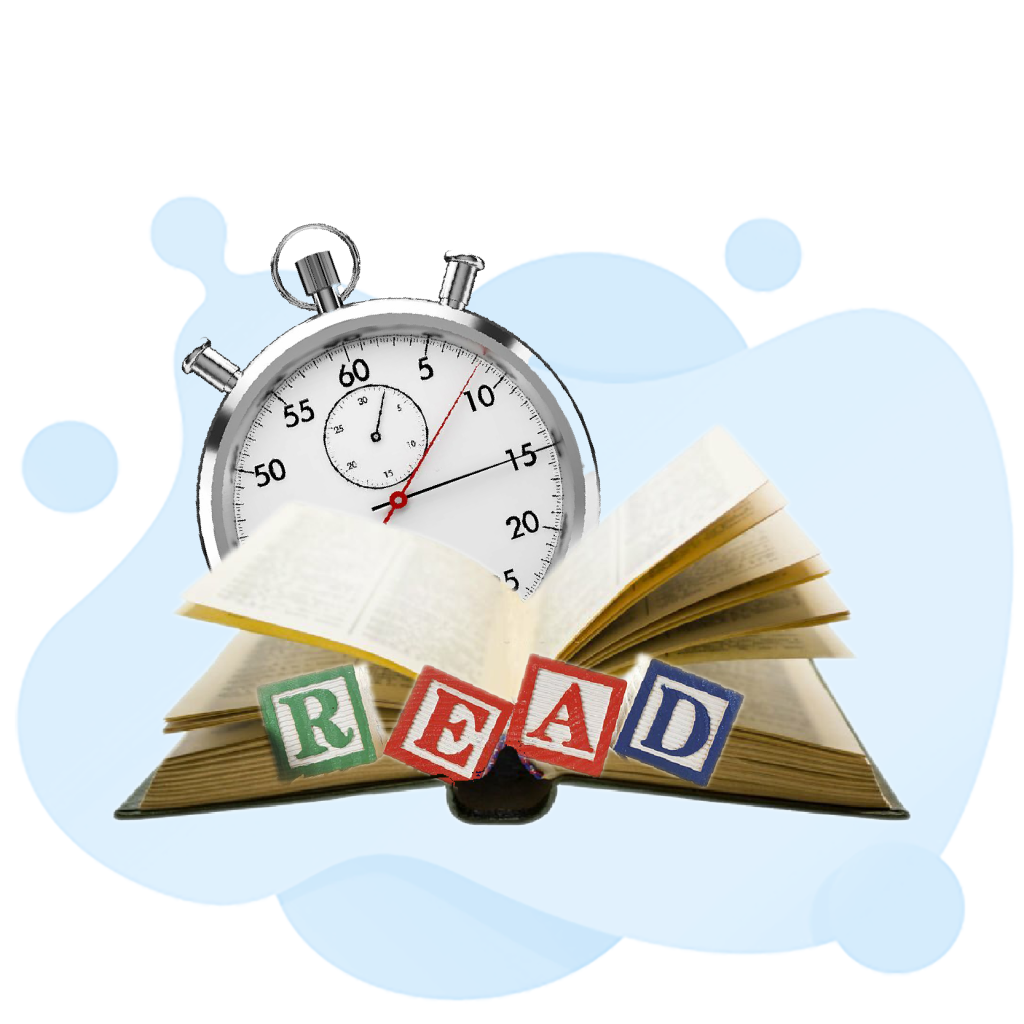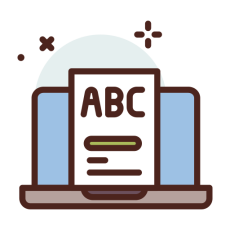WPM Reading Test

The WPM Reading Test is not only useful for students and professionals looking to improve their reading abilities but also for parents and educators hoping to gauge a child’s progress in literacy. By measuring words read per minute (WPM), this test provides a quantifiable way to track improvement over time. Additionally, it can help identify potential areas of weakness such as slow reading speed, poor comprehension, or difficulty multitasking while reading.
Average WPM Reading
When it comes to reading speed, the average words per minute (WPM) can vary greatly from person to person. While some individuals are able to breeze through text at lightning speed, others prefer a more leisurely pace. The understanding of what constitutes an average WPM reading is often subjective and dependent on several factors.
One important consideration is the complexity of the material being read. For instance, when perusing a dense academic article or technical manual, it’s not uncommon for even proficient readers to slow down their pace in order to fully comprehend the content. On the other hand, lighter reading materials such as novels or news articles may allow for a quicker WPM rate due to their simpler language and narrative structure.
Another factor that influences WPM reading is an individual’s level of experience and familiarity with the subject matter. Someone well-versed in a particular field may skim through related texts faster than a novice who needs more time to process new information. Additionally, external distractions can significantly impact reading speed—being interrupted frequently or having background noise may disrupt concentration and reduce overall WPM.
In conclusion, determining an average WPM reading can be challenging due to variations in content complexity, individual experience levels, and external distractions. Rather than focusing on comparing ourselves to some arbitrary standard or benchmark, it’s more important for each reader to find a comfortable pace that allows for comprehension while also maintaining engagement with the material at hand. By cultivating good reading habits and minimizing potential distractions, we can all improve our own personal reading speeds over time. Additionally, it’s worth noting that speed shouldn’t always be the sole focus when it comes to reading. Sometimes, it’s more valuable to take the time to fully understand and absorb the information being presented rather than rushing through it just to increase our WPM count.
WPM Calculator Reading
When it comes to measuring your typing speed, the WPM (Words Per Minute) calculator is an essential tool. It allows you to determine how many words you can type accurately in a minute, giving you an idea of your proficiency level in typing. But have you ever considered the benefits of using this calculator for reading?
By timing yourself while reading and using a WPM calculator, you can not only track your reading speed but also improve it over time. Many people tend to read slowly because they subvocalize each word in their mind. By practicing speed reading techniques such as skimming and scanning, you can increase your reading speed without sacrificing comprehension. Using the WPM calculator allows you to measure your progress and set specific targets for improvement.
Moreover, knowing your WPM when reading can help optimize your study routine. Let’s say you have a stack of research papers or textbooks that need to be read before an exam or presentation. By estimating how long it will take you to finish each assignment based on your average WPM, you can plan ahead and allocate sufficient time for studying. This way, you’re less likely to feel overwhelmed by the workload with a clear timeline in place.
In conclusion, while we may often associate the WPM calculator with typing speed measurement, its application for tracking and increasing our reading speed should not be overlooked. By setting goals and utilizing various techniques like skimming and scanning, we can become more efficient readers who absorb information faster while maintaining comprehension levels. So next time you sit down to read a book or an article, why not challenge yourself to increase your reading speed? Start by timing how long it takes you to read a page, and then try to gradually decrease that time while still retaining understanding. With practice, you’ll be amazed at how much more you can absorb in a shorter amount of time.

Reading WPM Chart
Are you tired of feeling like a slow reader? Are you looking for ways to improve your reading speed and efficiency? Look no further than the Reading WPM (Words Per Minute) chart. This simple tool can help you track your reading speed progress and identify areas for improvement.
The Reading WPM chart is an effective way to measure how many words you can read in one minute. By regularly timing yourself and recording your results on the chart, you can see if you are making progress in increasing your reading speed over time. But don’t be discouraged if your initial results are lower than expected; it takes time and practice to become a faster reader.
One of the key benefits of using the Reading WPM chart is that it allows for self-reflection and goal-setting. As you track your reading speed over time, you may notice patterns or trends that can help inform your practice sessions. For example, maybe certain types of content or genres cause you to read slower, suggesting that these areas require more focus and attention. Armed with this information, you can set specific goals for improving your reading speed in those particular areas.
In conclusion, the Reading WPM chart is a valuable tool for anyone who wants to become a faster and more efficient reader. By tracking your progress over time and setting specific goals, you can gradually increase your reading speed while still maintaining comprehension and understanding of the material. So why wait? Start using the Reading WPM chart today and unlock new levels of knowledge through accelerated reading!
How Many WPM Should a 3rd Grader Read
When it comes to measuring reading fluency in young children, a commonly used metric is words per minute (WPM). However, determining how many WPM a 3rd grader should be reading can be subjective. While research suggests that the average 3rd grader reads around 90-120 WPM, it’s important to remember that every child develops at their own pace. Factors such as comprehension ability, vocabulary skills, and the difficulty of the text being read can all influence reading speed. It’s crucial not to solely focus on the number of words per minute but also consider other aspects of reading proficiency.

Instead of fixating on a specific number, educators and parents should prioritize building students’ overall literacy skills. Rather than solely focusing on speed, encouraging comprehension and critical thinking skills is equally important. For instance, engaging children in discussions about what they have read can enhance their understanding and retention of the material. Additionally, providing opportunities for independent reading allows children to explore various genres and develop a love for books.
Ultimately, while benchmarks exist for reference purposes, it’s essential to recognize that each child learns at their own pace. Rather than placing undue emphasis on numbers alone, fostering a love for reading and supporting individual growth are key to nurturing lifelong readership habits in 3rd graders. By focusing on building well-rounded literacy skills rather than merely measuring words per minute, educators and parents can better support each child’s unique learning journey and help them reach their full potential. This can be achieved through creating a supportive and engaging reading environment both at school and at home.
In the classroom, teachers can provide a variety of books that cater to different interests and reading levels. They can also incorporate activities that encourage students to share their thoughts and opinions about what they have read, fostering critical thinking skills. Additionally, giving students opportunities to collaborate with their peers in book clubs or literature circles allows for deeper discussions and promotes social interaction around literature.
Highest WPM Reading
The world of speed reading is constantly evolving, and there are individuals out there who have taken it to a whole new level. While many people strive to increase their reading speed, there are some who have already reached astonishing heights. In the realm of highest Words Per Minute (WPM) reading, these individuals leave us in awe with their lightning-fast abilities.
One name that stands out in the speed reading community is Anne Jones, whose remarkable feat of reading 4,700 words per minute has earned her the title of World’s Fastest Reader. Jones developed her unique method called Eye-Hop, which involves using small eye movements to scan ahead while comprehending the text simultaneously. Her achievement showcases not only her incredible cognitive abilities but also challenges our traditional understanding of how we read.
Another notable figure in the high-speed reading field is Howard Berg. Known as The World’s Fastest Reader according to Guinness World Records, Berg claims to be able to read an astounding 25,000 words per minute. He attributes his remarkable skill to mental processes such as visualization and pattern recognition rather than simply absorbing every word individually. Berg’s accomplishment raises questions about the limits of human cognition and opens up exciting possibilities for expanding our own reading capabilities.
These extraordinary individuals push the boundaries of what we thought was possible when it comes to devouring written information at lightning speed. Their achievements not only inspire but also make us question our own potential for growth in this area. As technology continues to advance and our understanding of the human brain deepens, it is fascinating to consider how we can harness these newfound insights to enhance our own reading abilities.

How to Increase WPM Reading
Use Guided Reading Techniques: One effective way to increase your words per minute (WPM) reading speed is to implement guided reading techniques. Break down the text into smaller sections, focusing on one section at a time. Use a pointer, such as your finger or a pen, to guide your eyes along the lines of text. This helps maintain focus and prevents unnecessary rereading or backtracking.
Practice Speed Drills: Incorporating speed drills into your reading routine can significantly improve your WPM reading speed over time. Set aside specific practice sessions where you challenge yourself to read as fast as possible while still comprehending the material. Gradually increase the difficulty level by selecting more complex texts or attempting to read faster than before. By consistently pushing yourself, you will notice visible improvements in both your WPM and reading comprehension skills.
Utilize Peripheral Vision: Engaging your peripheral vision can enhance your overall reading speed. Instead of fixating solely on individual words, try widening your field of view to capture multiple words or even entire lines at once. With practice, this technique trains your eyes to perceive more information per glance, leading to notable increases in WPM reading speeds without sacrificing comprehension.
Remember, increasing WPM reading is not just about speed; it’s also about maintaining comprehension and retention levels. Therefore, alongside these tactics for enhancing speed, make sure to continue practicing proper skimming and scanning techniques for locating key information quickly within a text!
Reading WPM Test Online
Reading WPM tests are a great way to improve your reading speed and efficiency online. With the increase in digital content, being able to read quickly and comprehend information is crucial. Online tests can help measure your reading speed and provide insights into areas that need improvement.

One benefit of taking a reading WPM test online is that it allows you to track your progress over time. You can take the test multiple times and see if you’re gradually increasing your reading speed. This feedback loop helps you stay motivated as you can visually see the improvements you’re making.
Additionally, online reading WPM tests often come with features like timed sessions or countdowns, which simulate real-life scenarios where time is limited. This trains your brain to read faster without compromising comprehension. These tests can also include various genres or topics, so you get exposure to different types of texts, helping broaden your knowledge base.
So, whether you’re a student trying to keep up with academic readings or someone who wants to optimize their productivity by consuming information faster, taking a reading WPM test online can be an effective tool for self-improvement. It not only helps boost your speed but also enhances comprehension skills and expands intellectual horizons in this ever-evolving digital age.
College WPM Reading Test
The college WPM (Words Per Minute) reading test is more than just a measurement of how fast you can read. It’s a window into your comprehension skills and ability to process information quickly. Many students perceive the WPM test as a daunting challenge, but it can actually be an opportunity for growth and improvement.
In today’s fast-paced world, the ability to read efficiently is crucial, especially in college where time is of the essence. The WPM test forces students to adopt strategies that enhance both speed and understanding simultaneously. It encourages them to scan paragraphs for key information, identify main ideas, and discern important details without getting bogged down by every word. This skill transfers well into the real world where we are bombarded with countless articles, emails, and reports daily.
Moreover, the WPM reading test prepares students for future careers that demand quick decision-making based on relevant information. In business settings or medical professions, for example, professionals need proficiency in speedy reading to gather pertinent data from research papers or case studies promptly. It’s about efficiency coupled with accuracy – essential qualities that potential employers look for when evaluating candidates.
Ultimately, the college WPM reading test is not just about achieving high numbers; it’s about equipping yourself with valuable skills that will serve you throughout your academic journey and beyond. So instead of viewing it solely as a hurdle to overcome during exam week, embrace it as an opportunity to enhance your abilities as a reader and critical thinker – skills that will undoubtedly contribute to your success in college and beyond.